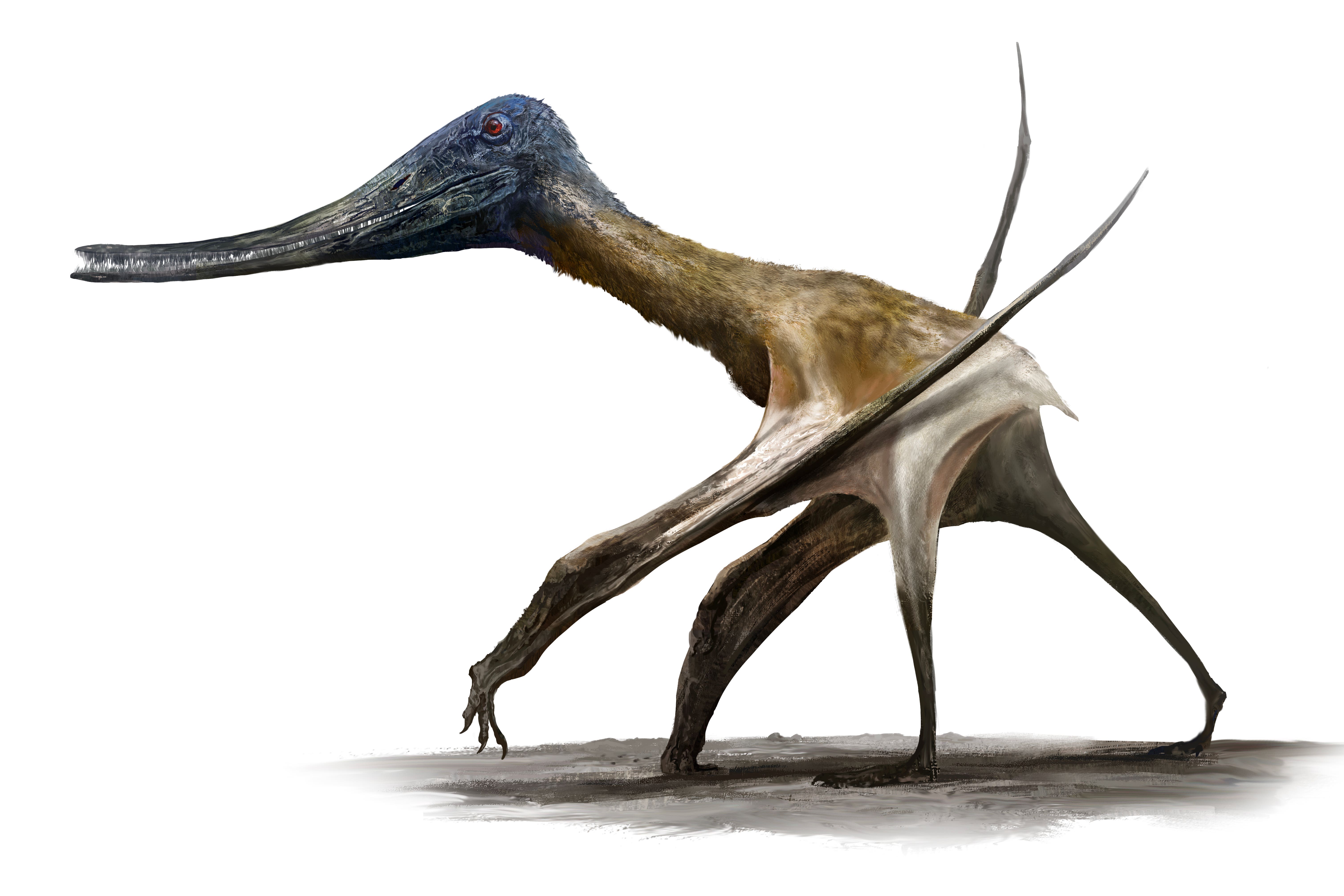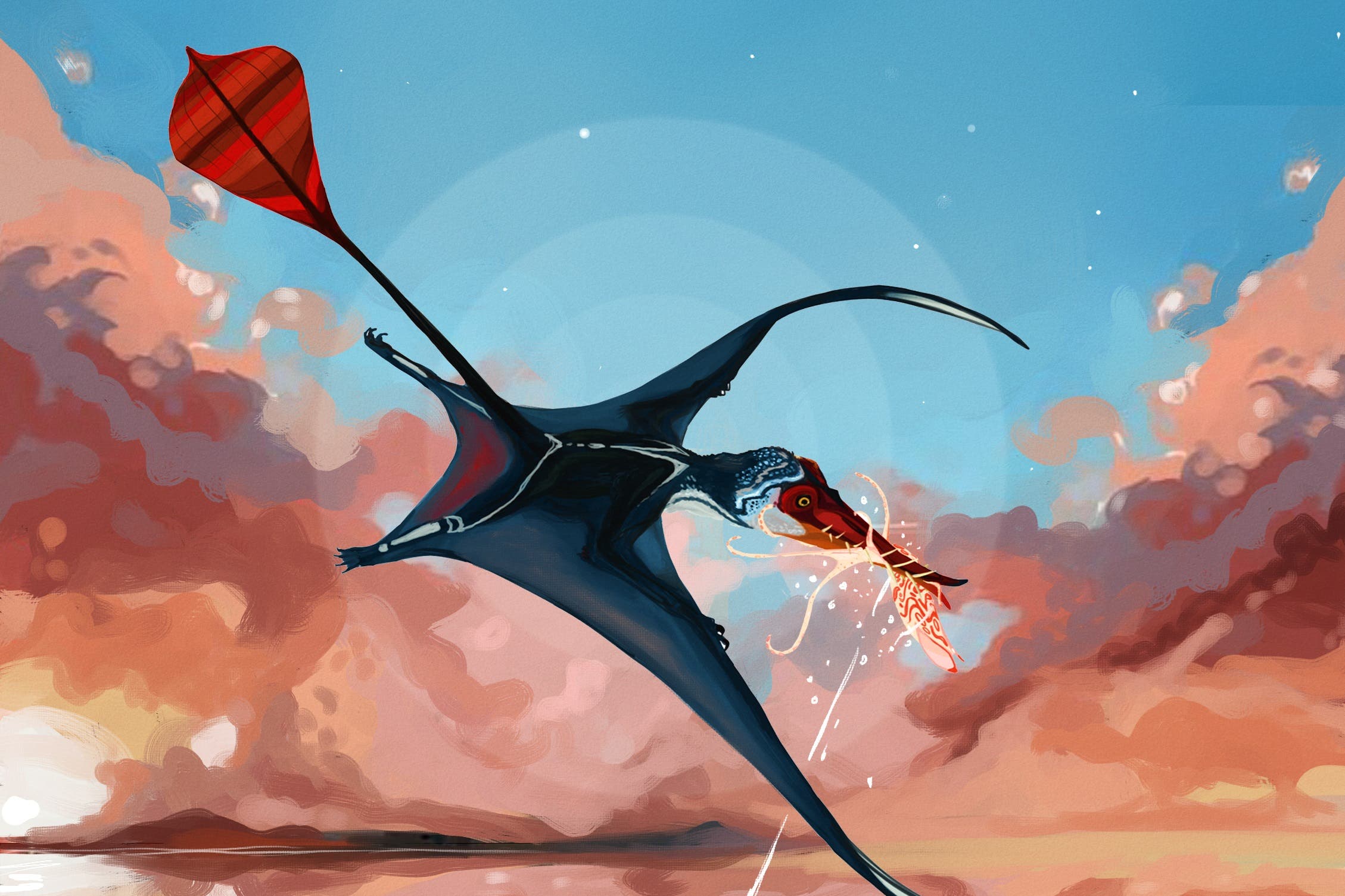
Researchers have long puzzled over how winged dinosaurs ruled the skies – until now.
Pterosaurs were able to fly thanks to large sail-like “vanes” at the ends of their tails, palaeontologists have discovered.
With the help of new laser technology, a team led by palaeontologists at the University of Edinburgh discovered it was down to the lattice-like vanes attached to the tips of the creatures’ long tails.
The researchers said the diamond-shaped structures, made from interwoven membranes, prevented the animals’ tails from fluttering like flags in the wind, and instead helped guide and stabilise them in flight.
They explained that the vanes most likely behaved like the sail on a ship, becoming tense as the wind blew through their cross-linked membranes and so enabling the reptiles to use them to steer through the sky.
Previous research revealed that maintaining stiffness in the tail vane was crucial to enabling early pterosaurs’ flight, but exactly how the was achieved has remained a mystery until now.
The team made the breakthrough using a new technique called Laser Simulated Fluorescence, which causes organic tissues almost invisible to the naked eye to glow.

Using the technique on 150-million-year-old fossils of a pterosaur known as Rhamphorhynchus, they found the delicate membrane of the reptile’s tail vane and its internal structures “visibly popped up” when scanned by the laser.
They pointed out that while studying prehistoric animals is usually restricted to examining fossilised bone, sometimes traces of delicate tissues such as skin and membranes can survive for millions of years.
Dr Natalia Jagielska, lead author and PhD graduate from the University of Edinburgh, said: “It never ceases to astound me that, despite the passing of hundreds of millions of years, we can put skin on the bone of animals we will never see in our lifetimes.
“Pterosaurs were wholly unique animals with no modern equivalents, with a huge elastic membrane stretching from their ankle to the tip of the hyper-elongated fourth finger.
“For all we know, figuring out how pterosaur membranes worked, may inspire new aircraft technologies.”

Pterosaurs – commonly known as pterodactyls – lived some 225 million years ago, and thrived for more than 100 million years before perishing with the dinosaurs in the extinction at the end of the Cretaceous period.
The finding provides researchers with a valuable insight into the animals’ anatomy and evolution, and raises other possibilities for how they may have used their tails.
Dr Jordan Bestwick, post-doctoral research fellow at University of Zurich, who was not involved in the study, said: “This study gives us an important glimpse into how early pterosaurs may have first taken to the skies and the importance of their tails while in the air.
“The study also raises intriguing possibilities for how pterosaurs may have used their tails to attract a mate; pterosaur tails may have been more colourful than we ever thought.”







